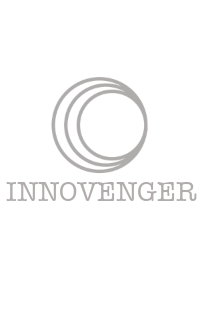E-commerce customers increasingly expect and demand more efficiency, flexibility, and transparency in their e-purchase journeys. The modern e-customer has several make-or-break needs that revolve around the logistics alone: They need to know how long it will take to receive their order; They want to be reassured that they can change their mind, either by cancelling the order at any time before it arrives, or by having several easy options to return their purchase for a refund, or perhaps to easily exchange their item for something else; Others want the ability to order online and to pick-up in-store, or at any convenient pick-up location, depending on where they plan to be on the expected delivery date… Beyond e-Customers, there are also standard in-store shoppers who have their needs too. Some want to be delivered at home, while others may request to hold and pick up their order at the closest shop that currently stocks their product.
Large retail companies and e-merchants use Order Management Systems (OMS) to keep track of multichannel orders from customers, manage stock levels, gain insight on packaging and shipping, and synchronise orders across various channels. With the relentless growth of e-commerce in play, coupled with the ever-increasing expectations of e-customers for their shopping experience, all market research around the OMS space points to the fact that the omnichannel OMS market is expected to grow significantly (and nearly double!) in the next five years: from a market size of around $1 billion in 2021 to over $1.9 billion by 2026.
Download here your free copy of our OMS eBook: 7 Critical Features You Should Expect From A Modern OMS
A key function of an OMS is that it provides a single, centralised system in which orders can be managed from all sales channels: store, web, call centre, mobile application and kiosk or boutique. The OMS orchestrates the data flow of orders amongst all the applications involved in the process.
To further enhance the OMS capabilities in serving the modern customer, today’s more advanced OMS systems embrace the paradigm of headless commerce. Headless commerce decouples the presentation layer (the environment in which you create customer experiences) from the back-end systems. A headless commerce architecture can be applied to most of the e-commerce toolbox (another typical example could be headless PIM).
With headless commerce, the decoupled back-end and front-end usually communicate with each other via API. This paradigm greatly enhances the flexibility of the whole solution, making it possible to modify the back-end as needed, without impacting the customer experience on the front-end. Conversely, it is possible to modify and enhance the front-end, or maybe just one front-end channel such as the mobile application, without the burden of adapting the back-end and without updating other front-end channels.
Our experience
Whilst we’ve participated in numerous OMS projects for our clients, one which stands out in terms of its functional extent, was the design, development and deployment of an OMS that would support the multichannel e-commerce of a global leader in luxury retail.
Following the headless paradigm, the OMS was the orchestrator of the orders flow within the full architecture. Starting from two distinct (and decoupled) front-ends: The primary one being dedicated to the e-customer experience (internally known as ‘the web’). This is the place where customers browse their favourite luxury items; where they place orders, choose where to receive those orders (shipped at home or picked up in a boutique), and where they manage all returns and exchanges.
The second front-end was dedicated to the customer care staff: Here a dedicated team could assist the customer in all the aspects of their journey, from order placement to delivery tracking, and to post-delivery assistance.
Behind this front-end architecture sit the back-end applications: The ones taking care of things like accounting processes or physical warehouse management.
And in the middle of all this, we have our loosely coupled OMS, talking with the two front-ends and with the back-end via API, and orchestrating the full process, sending specific messages to each system at specific events in the process.
The main tasks of the OMS (in this specific project) were to route the entire order process while managing the available stock, and while organising the most efficient fulfilment for each order from multiple possible sources, including the boutiques as stock sources for e-commerce, and tracking the shipping and delivery. The headless approach has paid off even during the project phase, allowing three different teams to work almost independently and affording them precious autonomy despite the resulting synergies.
Final take
Today’s customers demand a unified and simplified buying experience across all channels. A well-designed and deployed headless OMS can be a great asset to enhance the customer experience. From multichannel browsing to finalising the purchase, and to after-care returns and exchanges, a well-designed and deployed headless OMS is not only an asset, but also a critical factor to ensure a smooth and successful customer journey.







